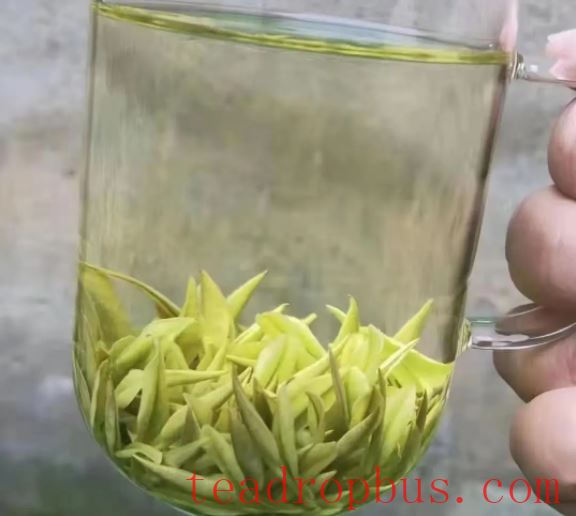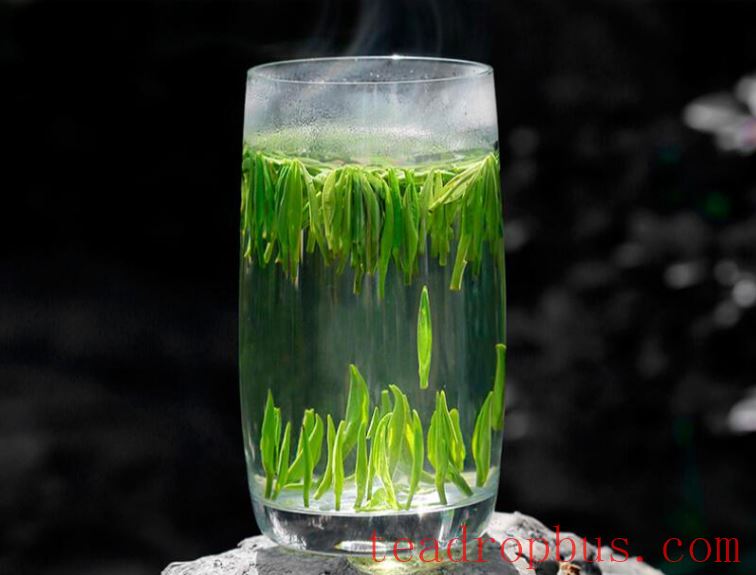Green Tea is a delicious beverage that not only has a unique fresh aroma and a refreshing taste but also helps relieve stress, improve sleep, and lower blood lipids. When brewing Green Tea, it is important to choose suitable teaware and the correct tea-to-water ratio to avoid overly strong or weak flavors.

Proper Brewing Methods for Green Tea
1. The order of adding tea leaves matters.
Do you add the tea leaves first or pour water first when brewing? Or do you pour some water before adding the tea? These questions are not trivial. Using green tea as an example, different types of green tea require different methods of adding the tea.
2. Top-down method: Pour water first, then add the tea, allowing it to slowly sink.
The top-down method is suitable for teas with a heavy body and many fine hairs, such as Biluochun and Xinyang Maojian, which are high-quality green teas. Due to their heavy body, these tea leaves will naturally sink when added to the water, gradually releasing their internal substances. The fine hairs on the surface will also slowly disperse in the water. This method results in a fresh and vibrant tea flavor without making the tea appear cloudy due to too many fine hairs.
3. Middle-down method: Pour water first, filling about one-third of the container, then add the tea, letting it soak for a while before pouring more water.

The middle-down method is generally suitable for brewing green teas like Longjing. First, fill the cup about one-third full with boiling water and let it cool to around 80°C. Then, place the tea leaves into the cup and pour about 80°C water from one side of the rim. When pouring water, make sure the stream is high and thin, which can help control the water temperature. With this brewing method, there's no need to worry about fresh, tender green tea becoming bitter due to excessively high water temperatures.
4. Bottom-up method: Add the tea first, then pour water.
Green teas like Taiping Houkui and Lu'an Guapian are best brewed using the bottom-up method. Their leaves are not particularly tender and have a large surface area. If you want a fuller flavor, it's best to add the tea leaves first before pouring the water.
When Is the Best Time to Drink Green Tea?
Drink half an hour after a meal; it is not advisable to drink green tea on an empty stomach, as it can dilute gastric acid and inhibit gastric juice secretion, which is detrimental to digestion. In severe cases, it may cause symptoms of tea intoxication such as headache, dizziness, palpitations, and irritability. Therefore, it's best to drink tea half an hour after a meal. Although green tea has many benefits, drinking it at the optimal time can enhance its effects.

Benefits and Effects of Drinking Green Tea
1. Anti-aging
Green tea helps delay aging. Tea polyphenols have strong antioxidant properties and physiological activity, acting as scavengers of free radicals harmful to the human body. Research shows that 1 milligram of tea polyphenol can eliminate the effects of excessive free radicals on the human body as effectively as 9 micrograms of superoxide dismutase, far exceeding other similar substances. Tea polyphenols can block lipid peroxidation reactions and eliminate active enzymes. According to tests conducted by Dr. Akira Oda in Japan, the anti-aging effect of tea polyphenols is 18 times stronger than that of vitamin E.
2. Disease suppression
Green tea helps suppress cardiovascular diseases. Tea polyphenols play a significant role in human fat metabolism. High levels of cholesterol and triglycerides in the body can lead to the deposition of fat on the inner walls of blood vessels and the proliferation of smooth muscle cells, resulting in atherosclerotic plaques and other cardiovascular diseases. Tea polyphenols, especially epicatechin gallate (ECG) and epigallocatechin gallate (EGC) and their oxidized products, help inhibit the formation of such plaques, reduce the concentration of fibrinogen that increases blood coagulation viscosity, and clear the blood, thereby inhibiting atherosclerosis.
3. Radiation protection
Green tea helps prevent and treat radiation damage. Tea polyphenols and their oxidized products have the ability to absorb the toxicity of radioactive substances like strontium-90 and cobalt-60. According to clinical trials conducted by medical departments, the use of tea extracts to treat mild radiation sickness in tumor patients undergoing radiotherapy has an effective rate of over 90%. For aplastic anemia, the effective rate of treatment with tea extracts reaches 81.7%, and it is even more effective in treating leukopenia caused by radiation exposure.

4. Antiviral and antibacterial
Green tea helps inhibit and resist viruses and bacteria. Tea polyphenols have a strong astringent effect and can significantly inhibit and kill pathogenic bacteria and viruses, with a clear effect on reducing inflammation and diarrhea. Many medical units in China have used tea preparations to treat acute and chronic dysentery, amoebic dysentery, and influenza, achieving cure rates of around 90%.
5. Beauty, skincare, and sun protection
Green tea helps with beauty and skincare. Tea polyphenols are water-soluble substances. Washing your face with them can remove facial oiliness, tighten pores, and have disinfectant, sterilizing, anti-aging, and skin protection effects. They can also reduce the damage caused by ultraviolet rays in sunlight to the skin.
6. Refreshing and invigorating
Green tea helps refresh and invigorate. The caffeine in tea can stimulate the central nervous system, enhancing brain activity and providing mental clarity. It is also beneficial for alleviating migraines.
7. Diuretic and fatigue relief
Green tea helps with diuresis and fatigue relief. The caffeine in tea can stimulate the kidneys, promoting the rapid excretion of urine and increasing the filtration rate of the kidneys, reducing the time harmful substances remain in the kidneys. Caffeine can also eliminate excess lactic acid in urine, helping the body recover from fatigue more quickly.

8. Fatigue relief
Green tea contains potent antioxidants and vitamin C, which not only eliminate free radicals in the body but also stimulate the secretion of hormones that counteract stress and tension. The small amount of caffeine in green tea stimulates the central nervous system and invigorates the spirit. For this reason, we recommend drinking green tea in the morning to avoid affecting sleep.
Long-term scientific consumption of tea can improve skin quality and balance sebum production, as the antioxidants in green tea protect skin health and promote metabolism. When brewing green tea, boil the water and then let it cool for a period of time until it reaches the appropriate temperature before using it to brew the tea. This ensures that the effective components in the tea leaves fully dissolve in the water, improving the flavor and quality of the tea while also ensuring that the nutritional value of the tea leaves is not lost due to high temperatures, thus retaining more nutrients in the tea for the benefit of health and wellbeing.